#terracotta
Greek Terracotta Figure of a Woman, Boeotia, Tanagran, circa 3rd Century BC
Standing in a graceful attitude on a rectangular base with her right hand on her hip and holding an apple in her left hand, her left arm resting on a column, and wearing a long chiton and enveloping himation, her hair arranged in a melon coiffure with large circular chignon behind. Height 20.6 cm.
Post link
La Pieta, by Niccolo dell'Arca, in the Santuario di Santa Maria della Vita di Bologna, Bologna, Italy, mid-late fifteenth century. Painted terracotta figures. The figures surrounding the dead Christ are, from left to right, Joseph of Arimathea, Mary Salome (mother of John), the Virgin Mary, John, Mary Cleophas, and Mary Magdalene. Image taken from ARTstor and figural description taken from here.
Post link
Compianto sul Cristo Morto di Niccolò dell’Arca,
Santuario di Santa Maria della Vita di Bologna
Post link
Krater from the Geometric Period, terracotta, ca. 750-730BC, Greece.
Monumental vases like this one were used as grave markers during the Geometric Period (kraters for men and amphoras for women). On the largest part of the vase is depicted a scene called “prothêsis” in which the deceased is laid on a bier and surrounded by mourners. The mourners are represented with the hands on their heads because it symbolises their wailing. The charriots and shields depicted under the prothêsis are probably there to show that the deceased had a powerful ancestry.
Courtesy of Metmuseum.
Post link










Domenico Napoletano, Cona dei Lani (1517), dalla Chiesa di Sant'Eligio Maggiore, Museo e Certosa di San Martino, Napoli.
Statuette of Aphrodite or a Muse leaning on a pillar
Greek
Hellenistic Period
300–250 B.C.Greece
DIMENSIONS: Height: 39.4 cm (15 ½ in.)
Painted Terracotta
I love seeing painted figures with pigments that are thousand of years old.
Post link
~Statuette of a Woman Carrying a Boy on Her Shoulders.
Culture: Greek (Boeotian)
Place of origin: Boeotia, Greece
Date: 500 - 475 B.C.
Medium: Terracotta
Woman have been carrying mankind for millennia.
Post link
~ Aphrodite.
Place of origin: Asia Minor
Culture: Greek; Smyrna
Date: 300-200 B.C.
Medium: Terracotta; gilding
Post link
Eurykleia washing Odysseus’s feet
Terracotta plaque, ca. 450 B.C., Classical, Greek, Melian,19,7x18,6 cm
The Metropolitan Museum of Art Inv. 25.78.26
One of the dramatic threads in the account of Odysseus’s return to Ithaka is the gradual revelation of his identity. Here, Odysseus appears seated before a columned facade that represents his palace. Before him stand his son, Telemachos, and his wife,Penelope. As the old nurse,Eurykleia, washes Odysseus’s feet, she recognizes him from an old scar. Artistic depictions such as this are interesting not only for the illustrative detail that they provide but also for the subjects chosen.
Post link


~ Statuette of a Woman.
Culture: Greek
Date: 450 B.C.
Medium: Terracotta, polychromy
Terracotta Askos, 350 BC, Unknown
[This item is on display at the Metropolitan Museum of Art]
Post link
Terracotta vase in the form of an astragal, 460 BC, Unknown
[This item is on display at the Metropolitan Museum of Art]
Post link
Terracotta head
Nigeria, Nok region
ca. 600 BC-AD 250
Although probably a fragment of a nearly life-size male seated figure, this head is remarkably well preserved. The Nok terracottas may have been part of a shrine or temple or were placed on a tomb. The identities of the portrayed figures remain unknown, but the adornments and elaborate hairstyles and headdresses seem to indicate that they represent notables or leaders.
From the Cleveland Museum of Art
Head (Nok Terracotta) - Sub-saharan Africa
ca. 500 BC - 200 BCE
Sculptures like this one have come to be called Nok Terracottas. Triangular eyes, abstracted features and the use of subtractive sculpting techniques are characteristic of these Nok heads. Most of these heads are found by themselves; however, in some instances full body sculptures have been found in this style. The full terra-cotta sculptures are life-sized but tend to have a disproportionately large head compared to the body.
Unfortunately not much is known about the Nok culture and their reasonings behind their artistic decisions, but it should be noted that in later African art a large head can reflect respect for intelligence. The lack of information regarding how many of these heads were buried and found is due to the lack of documentation when finding pieces from this culture. However the Nok culture was one of the earliest centers of ironworking and terracotta figure production in Africa, that is one thing we do know for sure.
Source: The Met
Post link








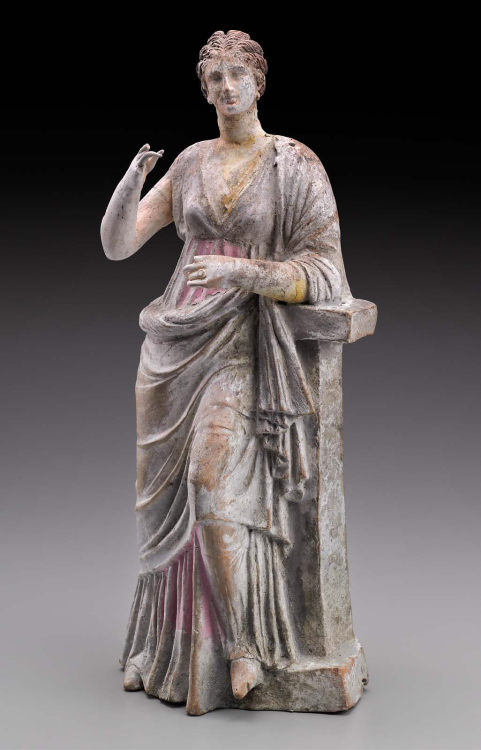
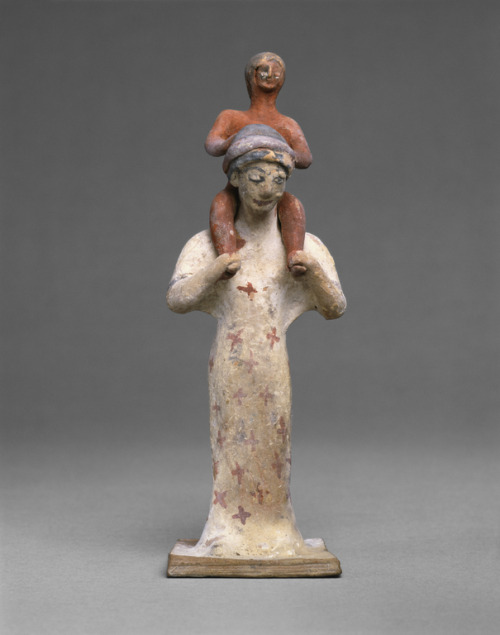
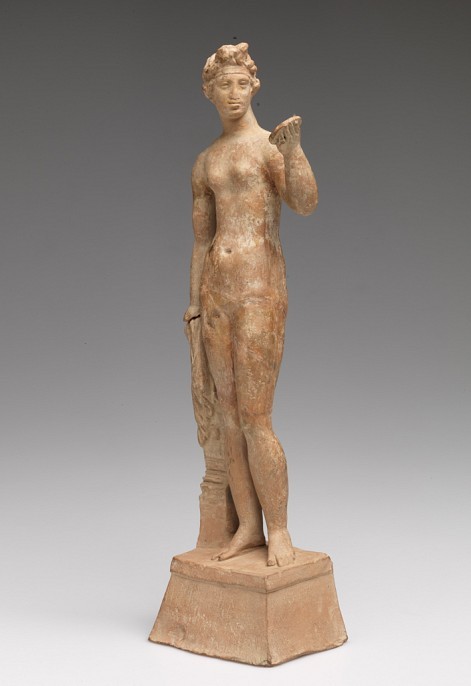



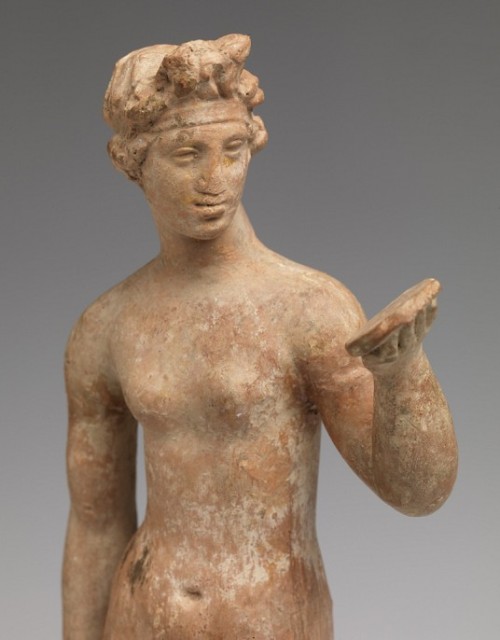
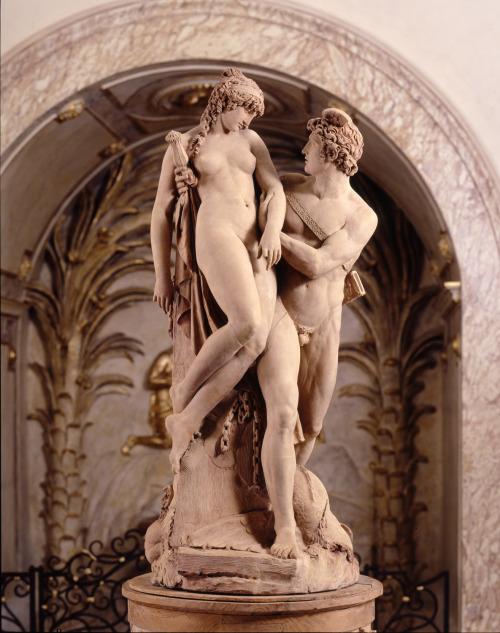
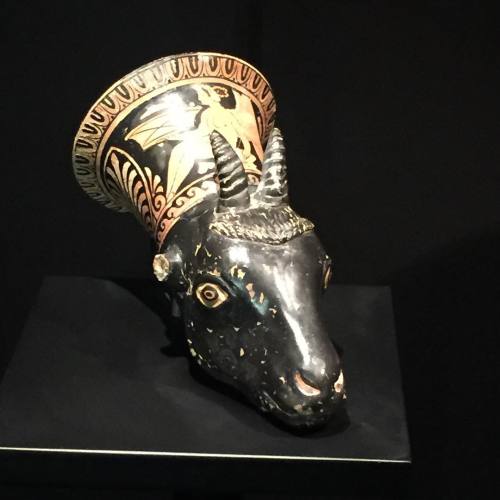


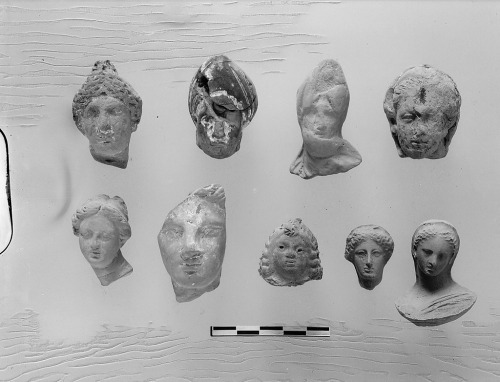
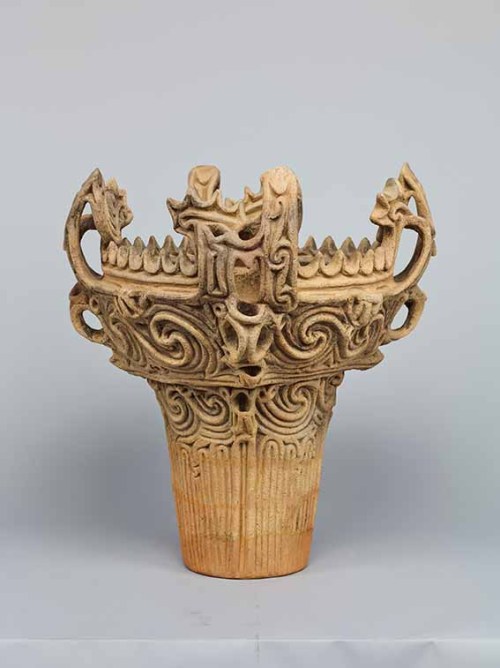
![Terracotta Askos, 350 BC, Unknown [This item is on display at the Metropolitan Museum of Art] Terracotta Askos, 350 BC, Unknown [This item is on display at the Metropolitan Museum of Art]](https://64.media.tumblr.com/aa0be0835cfc1351da9b0921a026c6d1/tumblr_n9eb4s8kjs1r16o8eo1_500.png)

